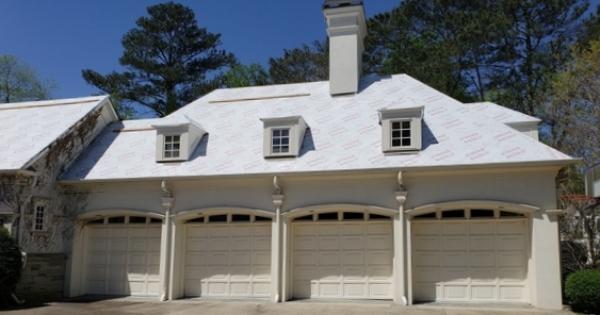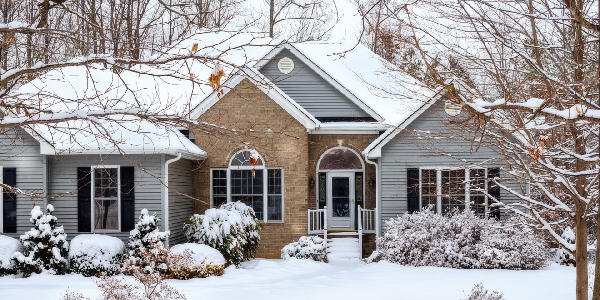Caring for your TPO System

By Western Colloid.
How to keep your single-ply roofing system cost-effective by giving it the proper maintenance.
Managing commercial real estate isn’t cheap. As a building owner, you not only need to budget for preventative maintenance or repair, but you also need to plan ahead for periodic material replacements. With the high cost of replacing a roof, you will want to do everything in your power to extend the lifespan of the current roof and maintain it properly. Read on to learn how to preserve, repair or restore your TPO system.
Why owners choose TPO roofing systems
TPO, or thermoplastic olefin, is a type of single-ply roofing system. Many people are familiar with PVC single-ply roofs, which have been on the market for longer. TPO roofs were first introduced to the market in the 1990s and have gained popularity and market share in the last 20 years.
Single-ply roofs are, as the name suggests, a single layer of engineered plastic sheeting laid over the roof deck and insulation. They can be mechanically attached using fasteners and welds, adhered using chemical adhesives or ballasted with weights like gravel.
TPO has become a common choice for building owners and contractors because it can be quick to install and is often more affordable by the square foot than PVC single-ply systems. TPO is also a white material, giving it better reflectivity than darker-colored traditional roofing materials. This can reduce the energy load on building HVAC systems and lower overall energy costs.
Causes of premature aging in TPO roofing systems
Although it’s a cost-effective and energy-efficient solution for many building owners, TPO is still a relatively new product. Many roof systems are warrantied for up to twenty years, so we are only now beginning to understand how TPO roofs age and what factors can play into premature aging and failure.
TPO roof manufacturers continue to refine their product, but a new and improved formulation is not of any real benefit to a building owner dealing with a failing roof.
Over the last ten years, contractors and industry associations have documented the most common causes of damage and early failure in TPO roof systems. These include:
-
Extreme heat
-
Ponding water
-
Poorly adhered seams
When dealing with any material that has to be installed in pieces, the weakest point is always at the seams, and this is true for TPO. Extreme temperatures cause the plastic to shrink or warp, and extended exposure to high heat can cause TPO to peel and flake along the seams. This phenomenon is known as “burnout.” This issue is magnified in areas where there is additional UV reflected from walls and windows.
Similarly, TPO roofs with poor drainage can lead to ponding water. If this water collects for long periods of time and particularly if it sits over seams, the system can degrade, leading to catastrophic water infiltration.
How to preserve your TPO roof system
The first step in preserving any roof system, regardless of the material, is a regular and proactive inspection program. Building owners and operators need to conduct regular inspections. If it can’t be done in-house, contractors or consultants can help develop and manage an inspection program for you.
As part of the program, all areas of the roof need to be inspected, and the condition carefully documented. This documentation makes up a critical part of capital planning, as it allows estimates to be made for roof system longevity, identifies problem areas that will need repairs sooner or later and in the event of premature failure, will often be required by manufacturers in order to honor warranties.
In addition to regular inspections, roofs should also be inspected as soon as practical after extreme events like hail, or if there has been higher than usual foot traffic, like if new rooftop appliances, solar panels or exhausts have been installed.
The key element of any successful roofing inspection system is that signs of damage are identified and repaired as proactively as possible. Roof damage is insidious and even small holes and seemingly minor cracks in joints and seams can lead to serious damage if water gets into the substructure or the rest of the building.
Repairing and restoring your TPO roofing system
Inevitably, all roofs decay, but even an affordable option like TPO is expensive to replace fully, particularly if it’s showing signs of damage earlier than expected. If your TPO is showing signs of burnout, water damage or general age, there are ways to extend the life of the roof without undertaking the expense of a complete replacement.
The first step is to patch any areas that show signs of damage. Use a high-quality and flexible elastic cement to create a waterproof seal. This is especially effective when dealing with failing seams around joints and flashings. An extra benefit of using this high-quality, water-based elastic cement is that it not only will last a long time it’s also compatible with most other products. When you go to reroof, you won’t have adhesion issues.
For larger-scale repairs and restoration projects, contractors should offer a solution that not only provides a durable and waterproof membrane to protect your building, but that also will last for decades, so you can manage capital costs.
If you’re dealing with a TPO roof that failed before its time, a solution like a Fluid Applied Reinforced Roof (FARR) can help repair and even restore your system. It provides a fully adhered continuous surface with no seams, improving the TPO’s waterproofness and protecting your interior building systems.
Installing roof coatings over TPO
Coatings like asphalt emulsion and acrylic are effective solutions that will extend the life of TPO roof systems. They’re cost-effective and easy to install, which is particularly advantageous when a new roof is an unexpected expense.
When selecting a roof coating, talk to your contractor about whether or not the coating will require a TPO primer. On their own, some coatings may not properly adhere to the TPO substrate but using a specially formulated primer will ensure the proper bonding is achieved and protect the building.
Roof coatings offer a number of benefits for buildings with TPO roofs:
-
FARR systems are thicker than most TPO, giving added durability. Some coating systems are even rated for hail impact.
-
White acrylic coatings offer better reflectivity than TPO, improving energy efficiency.
-
Coatings go on in a series of multiple fully adhered layers. There are no mechanical fasteners, meaning water cannot get under the system, and there are no new perforations or seams in the roof surface.
-
Acrylic coatings are built to withstand extreme temperatures, even in the hottest climates, such as Arizona and colder mountain climates in Colorado.
-
Fluid coatings create a waterproof seal with layers of redundancy, making it an ideal solution for areas with ponding water.
-
Western Colloid roof coatings can be warrantied for up to 20 years, giving building owners for added peace of mind. If a more cost-effective, 10-year warranty option is chosen, the warranty is easily renewable with the simple application of a new topcoat.
-
FARR systems are sustainable. They are water-based, low VOC and energy-efficient. They are easily renewable at the end of the warranty period and they keep the old roofing out of the landfills.
How a membrane coating system is installed over a TPO system depends on the condition of the roof. If the single-ply is peeling away as a result of burnout, it may need more layers of coating than if it’s still in a little better condition. A roof assessment by a professional that is familiar with Fluid Applied Reinforced Roof Systems (FARR) is recommended.
If you have an aging or degraded TPO roof, a roof coating system may be the solution you need to manage your capital expenses and protect your investment. To book a complimentary consultation, visit the Western Colloid website.
Have a question? AskARoofer.
Find your local roofing contractor in the RoofersCoffeeShop® Contractor Directory.
Original article source: Western Colloid









Comments
Leave a Reply
Have an account? Login to leave a comment!
Sign In